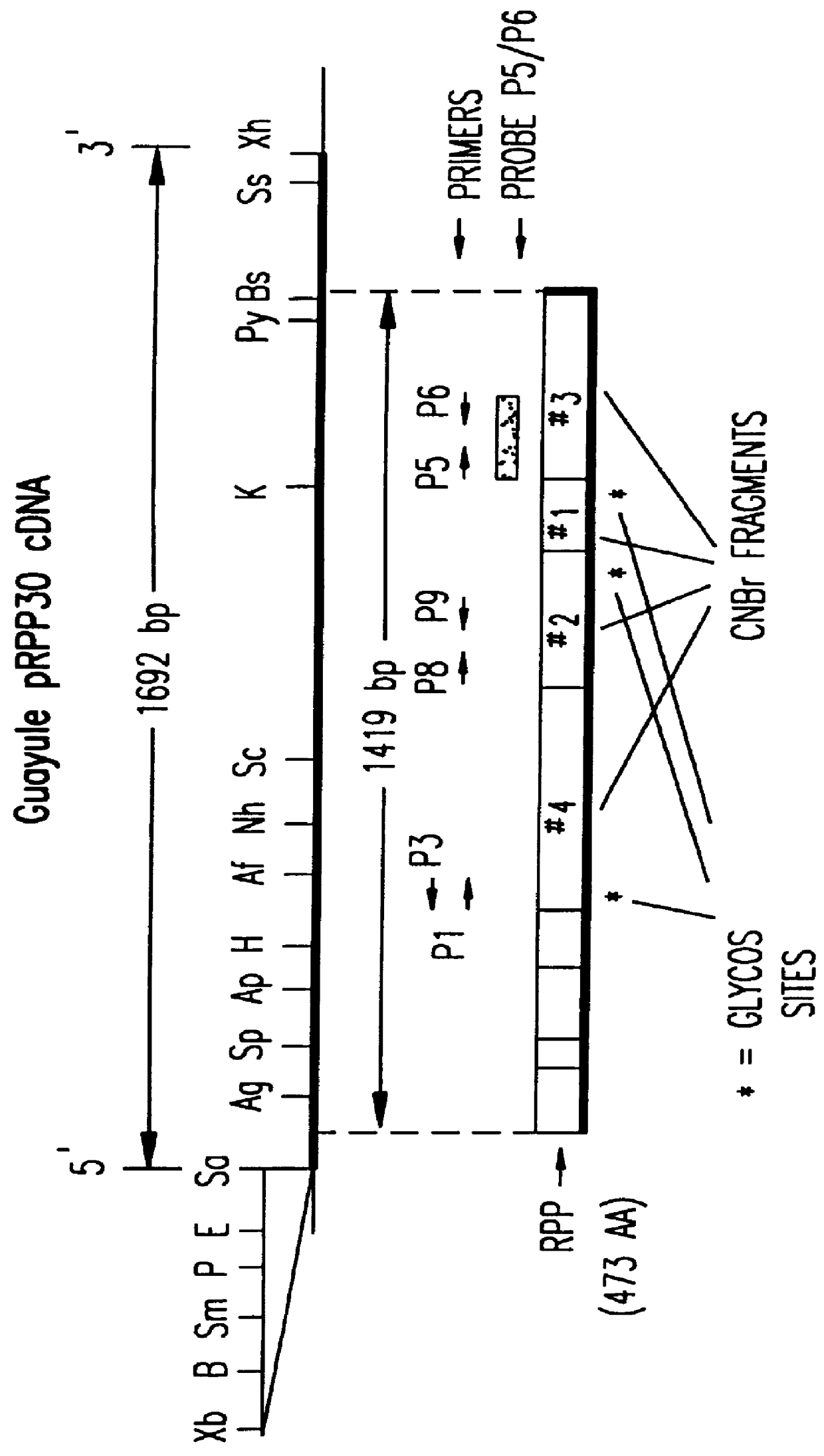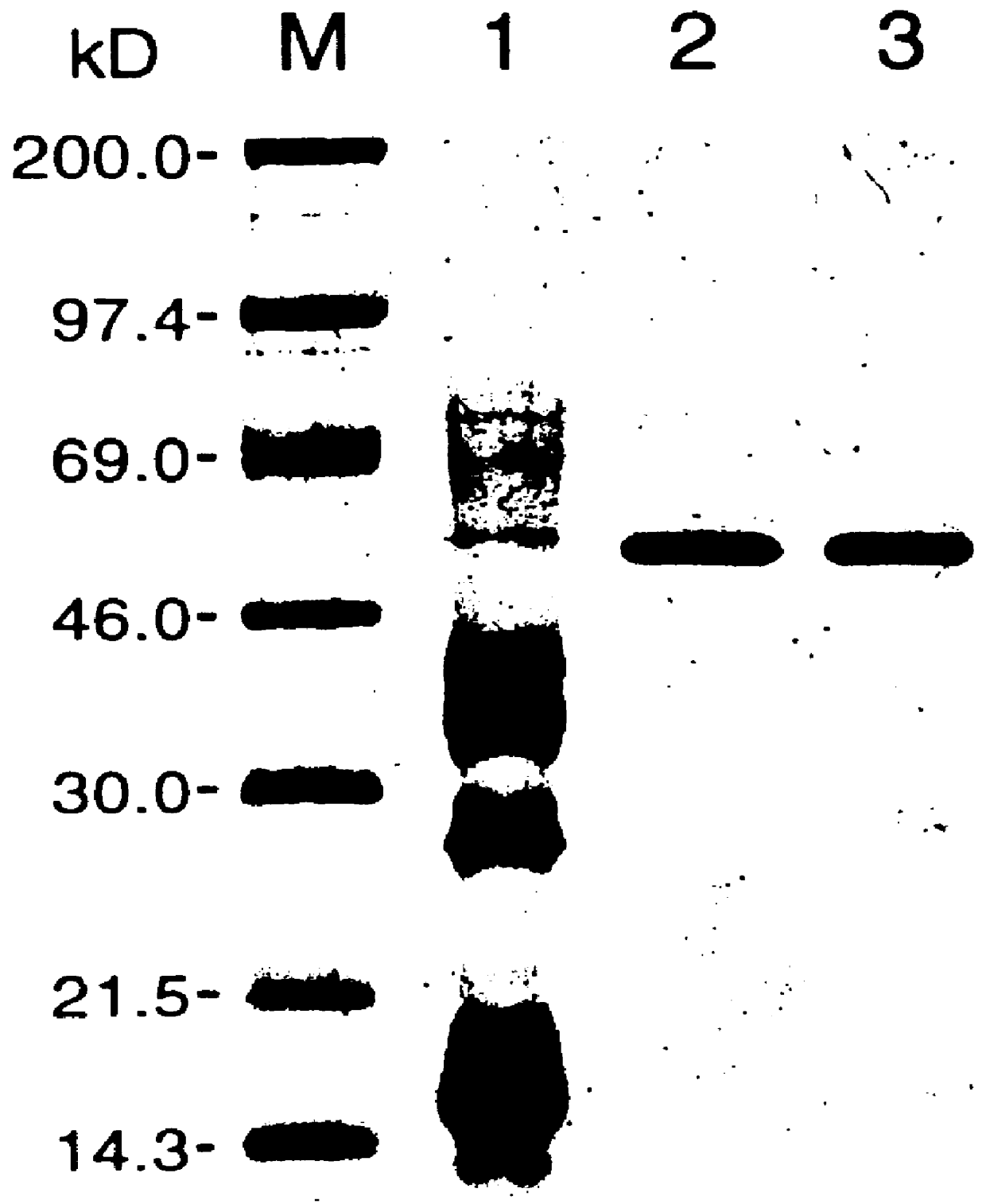Enzymatic antioxidant of allene oxide for lipid peroxidation in biological systems
a technology of allene oxide and lipid peroxidation, applied in the field of bioengineering, can solve problems such as initiating autoxidation of rubber, and achieve the effect of beneficial antioxidative effect of rpp
- Summary
- Abstract
- Description
- Claims
- Application Information
AI Technical Summary
Benefits of technology
Problems solved by technology
Method used
Image
Examples
Embodiment Construction
For purposes of clarity of description, and not by way of limitation, the detailed description of the invention is divided into the following subsections:
(i) the RPP gene and its encoded protein;
(ii) RPP expression;
(iii) RPP is a species of AOS;
(iv) uses of RPP and other AOS enzymes.
5.1 THE RPP GENE AND ITS ENCODED PROTEIN
In one specific embodiment, the present invention relates to a purified and isolated nucleic acid molecule having the nucleic acid sequence set forth in FIG. 3 and SEQ ID NO: 12, which is the full-length cDNA of guayule RPP.
In related embodiments, the present invention provides for a purified and isolated nucleic acid sequence which is at least 90 percent homologous, and preferably at least 95 percent homologous, to a nucleic acid molecule having a sequence as set forth in FIG. 3 and SEQ ID NO: 12. Homology may be determined using any standard software for calculating homology between nucleic acid molecules, for example, but not by way of limitation, the FASTA algo...
PUM
| Property | Measurement | Unit |
|---|---|---|
| Mass | aaaaa | aaaaa |
| Mass | aaaaa | aaaaa |
| Mass | aaaaa | aaaaa |
Abstract
Description
Claims
Application Information
 Login to View More
Login to View More - R&D
- Intellectual Property
- Life Sciences
- Materials
- Tech Scout
- Unparalleled Data Quality
- Higher Quality Content
- 60% Fewer Hallucinations
Browse by: Latest US Patents, China's latest patents, Technical Efficacy Thesaurus, Application Domain, Technology Topic, Popular Technical Reports.
© 2025 PatSnap. All rights reserved.Legal|Privacy policy|Modern Slavery Act Transparency Statement|Sitemap|About US| Contact US: help@patsnap.com



